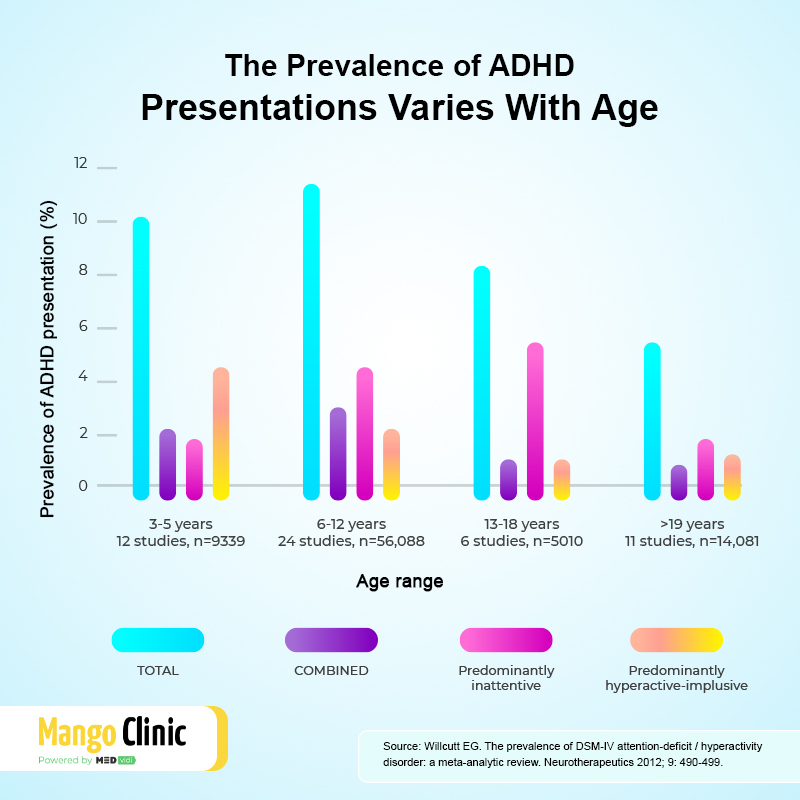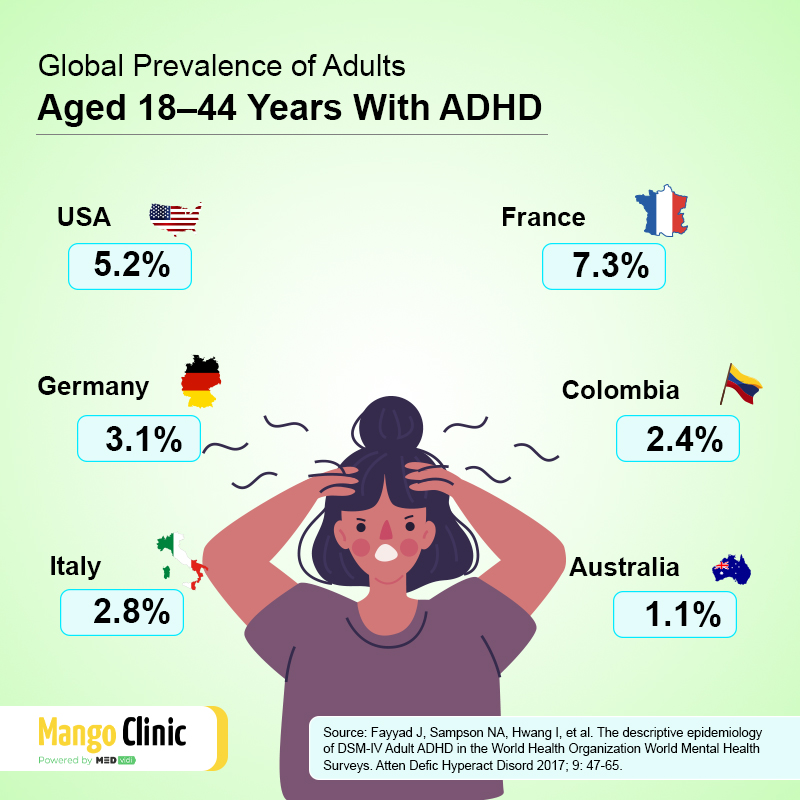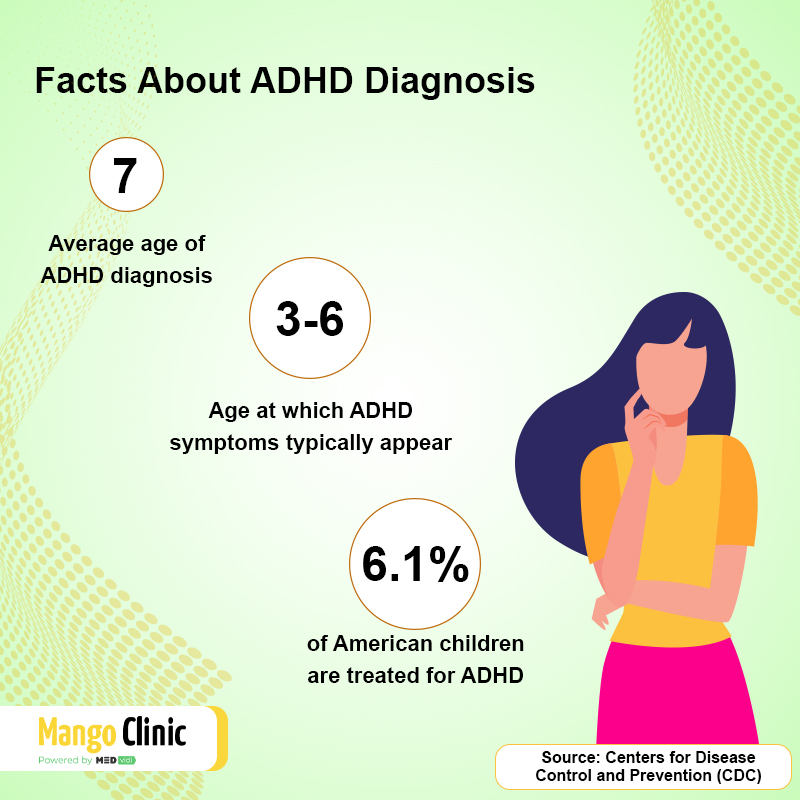What Is the Treatment for Limbic ADD?

ADD, short for Attention Deficit Disorder, and ADHD, short for Attention Deficit Hyperactivity Disorder, are some of the most common mental conditions affecting most people globally. These conditions affect adults, teens, and children and usually manifest and are diagnosed in early childhood stages, often continuing into adulthood.
There’s been plenty of research about the condition available online; however, scientists don’t yet understand ADD and ADHD’s root causes, plus, there isn’t any cure currently. What scientists have researched and understood is recognizing the condition at relatively early stages and managing the symptoms.
This article is meant to provide you with detailed information on diagnosing ADHD and different types of ADD. It also covers information on how to take care of individuals affected with ADD and improve their general well-being. Read on to learn more.
Improve your ADHD symptoms by booking an appointment with us today!
The Standard Method of ADHD Diagnosis
ADD/ADHD affects individuals’ daily functioning, personal relationships, and even work. Thus, diagnosing the condition earlier helps such individuals understand their condition and learn to manage their symptoms.
Although this condition has no cure, many individuals have reported that they’ve experienced significant positive results through specialized treatment. While there are different variations for ADHD diagnosis, what is the standard method used?
Psychiatrists and clinicians often use the DSM, an acronym for the Diagnostic and Statistical Manual of Mental disorders, to diagnose mental illnesses. The manual, published by American psychiatrists of the American Psychiatric Association, covers various mental health disorders affecting adults and children.
The manual contains symptoms, descriptions, and other details helpful in diagnosing mental health conditions. The book also contains various statistics concerning genders and ages most susceptible to mental illnesses and different treatment approaches that are often used.
Regardless of which type of ADHD is presented in an individual, several conditions must be met before doctors make an official diagnosis. They include:
- The presence of several symptoms noticed before an individual is 12 years old
- Presence of symptoms in various settings, i.e., at work, school, or home
- Instances where the symptoms reduce or interfere with daily functioning
- The fact that other mental conditions can’t explain the symptoms
When diagnosing ADHD, doctors will often indicate the condition’s severity, severe, mild, or moderate:
- Mild: This is a situation where a child or adult exhibits all enough ADHD symptoms for a positive diagnosis that causes minor functioning impairments.
- Moderate: These are conditions where impairments have more significant effects.
- Severe: This is a situation where affected individuals exhibit more symptoms than would be minimally needed for an ADHD diagnosis. Often, these symptoms cause the affected individual to experience significant impairment as a result.
The Assessment Process
Typical ADHD assessments often take three hours; however, this can vary between practitioners. Most practitioners have their ways of performing ADHD tests. However, individuals being tested can still expect in-person interviews covering various topics like health, development, lifestyle, and family history.
The clinician may request to interview other family members, partners, and close people in your circle. For children, they may want to question the coach, teacher, or daycare provider. They may also use rating scales, questionnaires, distractibility and sustained attention measures, and intellectual screenings.
The clinician may ask the person being tested to elaborate on various matters like:
- How often are they quite working on a task before you are done
- How often do they lose things
- How often do they forget important issues or appointments
- If they have trouble sitting still
- If they struggle to relax
- If they are easily distracted by their environment
The clinician may also recommend that the affected person do a medical test to eliminate secondary medical causes that could be causing them to experience said symptoms. Psychiatrists don’t use psychological tests alone to diagnose ADHD; however, psychiatrists may recommend them to help support conclusions and provide more comprehensive assessments.
Get your ADD assessed with the help of our expert team – Click the button below to get started.

Types of ADD
Type 1: Classic ADD
Classic ADD is often evident in children earlier on in their life because of their wiggly, active, and colicky nature. Children tend to be noisy, restless, impulsive, talkative, and demanding. Their conflict-driven behavior and hyperactivity often get them noticed early on.
Classic ADD can also be called ADHD; however, it would not be best to use the term exclusively since not all ADD types have a hyperactive side. Parents that raise kids with classic ADD are often overwhelmed, tired, or embarrassed by their child’s behavior and hard to control nature. The condition usually affects boys more than it does girls.
Common symptoms include:
- Restlessness
- Inattentiveness
- Being fidgety
- Easily distracted
- Difficulties waiting for their turn
- Being disorganized
- Noisiness
- Impulsiveness
- Excessive talking
- Poor listening skills
- Constant interruptions
- Poor attention to detail
- Poor focus
- Forgetfulness
Scans show that individuals affected by this condition have regular brain activity at rest. However, their brain activity decreases in the cerebellum, basal ganglia, and prefrontal cortex’s underside. The basal ganglia contain structures responsible for producing dopamine (a neurotransmitter responsible for attention, motivation, and the individual’s “idle” speed).
Type 2: Inattentive ADD
This is the second-most common type of ADD, and individuals suffering from this condition are often quiet, introverted, and tend to daydream constantly. They could be labeled as lazy, slow, or unmotivated, a misdiagnosis that usually happens because such individuals tend to have fewer behavioral problems.
People with inattentive ADD don’t often draw negative attention compared to those with classic ADD. Common symptoms exhibited by people affected by inattentive ADD include:
- Poor attention to detail, or making careless mistakes
- Poor focus
- Forgetfulness
- Easily distracted
- Excessive daydreaming
- Being disorganized
- Constant boredom
- Low dedication to tasks
- Appearing apathetic or unmotivated
- Poor listening skills
- Being sluggish, tired, or moving slowly
- Poor time management
- Appearing preoccupied
- Losing things
Scans of individuals affected with inattentive ADD show regular brain activity at rest; however, there is reduced activity in the cerebellum, basal ganglia, and prefrontal cortex’s underside when concentrating.
This type of ADD is the perfect example of why the term ADD doesn’t fit all ADD types. For instance, if parents and clinicians looked for hyperactivity to get a diagnosis, individuals with this condition may be left out of treatment and live life below their true potential.
You can have anyone of the 7 types of ADD. Book an appointment now to get the correct diagnosis.
Type 3: Overfocused ADD
To have good focus, individuals must be able to switch their attention between various points of focus. People affected by the overfocused ADD condition often exhibit most ADD features; however, they have difficulty shifting their focus from their primary subject.
They become incredibly focused on specific events, feelings, emotions, or tasks that they tune out everything else. Such individuals often tend to get locked or stuck in negative emotions, thought patterns, or behaviors that they can’t seem to get out of. This condition is commonly found in individuals that abuse substances and either grandchildren or children of alcoholics.
- Common symptoms include:
- Difficulties shifting one’s attention between various subjects
- Core symptoms of ADD
- Constant holding on to personal opinions while disregarding external opinions
- Senseless or excessive worrying
- Having to do things in a certain way and getting upset if they aren’t
- Getting stuck in negative thought loops
- Individuals may or may not exhibit hyperactive tendencies
- Being argumentative or oppositional
- Quick-tempered episodes
- Irritability
- Panic and fear for no reason
- Periods of spacing out or confusion
- Visual changes, i.e., objects change shape or see shadows
Scans of individuals affected with over focused ADD show regular brain activity at rest; however, there is reduced activity in the cerebellum, basal ganglia, and prefrontal cortex’s underside when concentrating.
Type 4: Temporal Lobe ADD
Individuals suffering from temporal lobe ADD have ADD symptoms plus symptoms related to temporal lobe complications. These include issues with memory, learning, aggression, mood instability, temper, and even violence. It isn’t unusual to see this condition in people who’ve suffered head injuries.
Common symptoms include:
- Core ADD symptoms
- Episodes of déjà vu
- Mild or sensitive paranoia
- Memory issues
- Abdominal pain or headaches of unknown origin
- Auditory processing issues
- Prior head injury
- Quick-tempered episodes
- Dark thoughts
- Confusion or spacing out
- Possible learning problems
- Episodes of unfounded fear or panic
- Probable hyperactivity
- Visual changes like seeing objects transform or seeing shadows
Scans of individuals affected with temporal lobe ADD show normal (or sometimes increased) brain activity at rest; however, there is reduced activity in the cerebellum, basal ganglia, and prefrontal cortex’s underside when concentrating.
Improve your mental health by booking an appointment with our ADD expert.

Type 5: Limbic ADD
Limbic ADD refers to a condition where the affected individual’s prefrontal cortex is underactive while their deep limbic area – the area responsible for setting an individual’s emotional tone regarding how happy or sad they are – is overactive.
Depression is also associated with overactivity of the limbic area; however, clinicians can use spectrometer scans and developmental history to know the difference between limbic ADD and depression. This helps clinicians choose the appropriate treatment for limbic ADD.
Common symptoms in individuals with limbic ADD include:
- Core ADD symptoms
- Feelings of guilt
- Perceived helplessness
- Moodiness
- Negativity
- Poor interest in things
- Low energy
- Sleep changes
- Low energy
- Chronic low self-esteem
- Social isolation tendencies
- Potential hyperactivity
- Feeling hopeless
Scans of individuals affected with limbic ADD show normal brain activity at rest; however, there is reduced activity in the cerebellum, basal ganglia, and prefrontal cortex’s underside when concentrating.
Type 6: Anxious ADD
People with anxious ADD often exhibit low activity in their prefrontal cortex and increased activity in their basal ganglia (a structure responsible for setting the body’s idle speed and is responsible for an individual’s anxieties). Treating individuals affected with this condition often involves soothing and stimulating their brains.
Common symptoms include:
- Core ADD symptoms
- Extreme nervousness or dislike of speaking in public
- Frequent anxiety or nervousness
- Extreme pessimism
- Symptoms depicting physical stress, i.e., headaches
- Avoiding conflicts
- Freezing in social situations
- Fear of judgment
Individuals with this condition often display increased activity in their basal ganglia both at rest and when concentrating. They also show decreased activity in their cerebellum and prefrontal cortex when concentrating.
Type 7: Ring of Fire ADD
Ring of fire ADD often makes individuals experience extreme emotional activity that they cannot “turn off.” The condition is thought to be caused by brain inflammation or infection or be mildly related to bipolar disorder. There are a few differences that set it apart from bipolar disorder, but it would be good to note that individuals can have both conditions simultaneously.
Types of ADD/ADHD
Inattentive type
Children one to 16 years need to display six or more symptoms, while adults 17 or older have to display five or more symptoms of inattention. The individuals have to experience the symptoms for six or more months before an ADHD diagnosis can be made.
They include:
- Making careless mistakes or a disregard to details
- Difficulties staying focused when performing specific tasks
- Poor listening skills
- Failure to complete tasks or follow instructions
- Poor organizational skills
- Poor interests in long-term tasks
- Losing track of essential items like school materials and wallets
- Forgetfulness
- Poor focus
- Impulsive, or hyperactive type
A similar criterion is used before diagnosing hyperactive disorder as an inattentive type. The major difference (when it comes to the hyperactive type) is that impulsivity/ hyperactivity symptoms are used instead. They include:
- Regular squirming or fidgeting.
- Regular habits where affected individuals ignore instructions to stay in one place or remain seated.
- Feeling restless or moving about even when one’s in situations where such behavior is considered inappropriate.
- Loud participations when taking part in leisure activities.
- Excessive talking.
- Blurting out answers before one finishes asking a question.
- Interrupting or intruding in conversations.
- Trouble waiting for or taking turns.
If you think you have inattentive ADHD, book your appointment with us today.
ADHD Combined
This type of ADHD is the most common and is often characterized by inattention and distractibility plus hyperactive and impulsive behaviors. Often, people affected by this condition exhibit six or more symptoms from each type of ADHD mentioned above.
Taking Care of Health and General Well-being
Treating people with ADHD is a little tough because there isn’t any one-fits-all treatment procedure. Simultaneously, limbic treatment is also hard to come across. However, there are steps you could take to improve your limbic system and reverse some of the effects caused by limbic ADD.
Our limbic system is quite essential since it helps us learn and develop by providing us with the necessary motivation. The limbic system gives us passion in whatever activities we choose to do, and as such, we need to ensure that it works optimally.
Ways to Boost the Limbic Brain
Relaxing
The amygdala, which is part of the limbic system, is responsible for a person’s emotions and (more often than not) its emotional stress, which triggers ADHD episodes in people affected with ADHD.
Thus calming down the limbic system and purging it of any excessive neurotransmitters is one good way to control ADHD symptoms. You could do this by meditating, doing visualization, breathing exercises, taking a bath, etc.
Exercising
Exercising is great for an individual’s physical and mental well-being. Regular exercising produces feel-good hormones (endorphins) that help you relax and feel positive, which is good for people suffering from ADHD. Exercising also boosts the creation of new neural networks that help with learning, which is a double positive.
Eat a good diet
Eating good food helps provide your limbic system with the necessary nutrients it requires to create neurotransmitters. Good food also helps provide your body with healthy nutrients and triggers the production of feel-good hormones by the limbic system.
Treatment
ADHD treatment is often determined by an individual’s age, the extent of the symptoms, tolerance to specific therapies or medication, and expectations for the condition’s course.
Treatment may include:
Psychostimulant treatment
The dr. may treat patients with psychostimulant medication to help them stay focused and become more attentive. The treatment helps stimulate the individual’s brain and is used to reduce major ADHD characteristics.
Psychosocial treatment
Psychosocial treatment helps teach the affected individual varying techniques they could use to control and even avoid some or most of the ADHD symptoms that affect their functioning.
Some of these techniques include:
- Developing positive habits
- Managing time
- Learning better organization skills
- Prioritizing events and tasks
- Budgeting
- Eliminating distractions
- Finding means of improving focus
Taking care of your health and well-being should be your priority. The only difference that sets people with ADHD apart from the others when it comes to good health and well-being is the individual goals.
While regular people work out to keep fit, people with ADHD work out to improve their mood, feel less hyperactive, and soothe their thoughts. If you have limbic ADD, then you could achieve this by going outdoors, exercising daily, relaxing, and meditating. It would be good to note that its symptoms can be managed even though limbic ADHD cannot be treated.
Contact us now for ADHD and other mental disorders treatment or click the banner below to book your appointment.








